Château Rouget
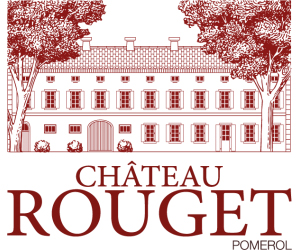
The Estate
Château Rouget history began several centuries ago. Already in existence at the end of the Roman Empire, Château Rouget’s terroirs were at that time merged with those of St Emilion.
Château Rouget appears in archives and the land register from 1700 onwards, and is considered one of the first official Pomerol Crus. This period corresponds to the building date of the splendid house symbolizing the estate, belonging then to the Bayonne family. The last family member involved in the estate, Pierre Bayonne, was also mayor of Pomerol during the First Empire. As a talented winemaker, he used Chateau Rouget as a perfect display for his skills.
At the end of the 19th century, a classification of Pomerol wines placed Rouget among the top five estates of the appellation. This recognition stems from the remarkable constancy showed by consecutive owners of the estate, who all worked hard to produce iconic wines. The Labruyère Family, who has owned Rouget since 1992, follows the same path. For more than 20 years, they have put all of their efforts behind positioning Château Rouget among Right Bank leaders.
The estate is now considered by critics and amateurs as the winery which has made the most consistent progress across the appellation, vintage after vintage.
The Team
The Labruyère family comes from Beaujolais region, where they have owned a winery in the Moulin-à-Vent appellation since 1850. Over the years, they chose to become established in other French major wine regions, using terroir quality criterion. This is how they selected Château Rouget in 1992. As head of the family, Jean-Pierre Labruyère had the ambition to restore the former glory of this property which had been recognized from 1868 as one of the best producers in Pomerol. In 2008, he passed management of the estate to his son Edouard who, with the help of estate manager Antoine Ribeiro and his team, carries on this hard work with the same ardor and passion.
The Vineyard
The Pomerol plateau is located near Libourne, northeast of Bordeaux. It slopes down across various terraces towards the Isle valley, a tributary of the Dordogne River. Thanks to the quality of its terroirs and wines, Pomerol is one of the most sought after appellations in the world. In Pomerol, Merlot is king. Clayey soils allow this grape to express itself like nowhere else worldwide. Located near Eglise-Clinet, Petrus and Le Gay, Château Rouget, which encompasses 17 hectares today, stretches across the gentle slopes of the Pomerol plateau near the village and the old church. Two thirds of vines are located around the estate, but Château Rouget also includes beautiful plots facing Petit Village, Le Pin, and Trotanoy. Vineyards are planted with the most suited grape varietals: Merlot represents 85% and is combined with Cabernet Franc. Soils can be either composed of clay and gravel, or clay and silica. Subsoils consist of iron-rich sandstone. The vines are around 40 years old. The vast replanting program started in 1992 combined with the purchase of 2 high-quality hectares from the prestigious neighboring estates on the high plateau in 1999 have considerably reinforced the position of the cru.
Vinification
In 2001, the cellar was entirely restored by the Labruyère Family with the idea of implementing a vineyard designated approach. Old vats have been replaced by truncated oak vats of 50 and 60 hl. They combine ancestral handicraft with state-of-the-art technology. A few stainless steel tanks have also been incorporated. The whole installation is thermo-regulated.
Maturity is a key concern at Chateau Rouget. Thus, the harvest date is carefully chosen in order to pick up the most balanced fruits. Harvest occurs in several passages in order to ensure an optimal maturity level. The grapes are handpicked and transported in small crates in order to prevent them from being crushed. With the same concern for quality, bunches are sorted a first time as soon as they reach the cellar. Then, once grapes are fully destemmed, they go through another double sorting table. Only the best grapes are kept for Chateau Rouget’s wines. Grapes are vinified batch by batch in order to render the best expression of each parcel. The benefits of putting wine into barrels as early as possible are widely known. For the past few years, Château Rouget has vinified part of its wine according to that idea: whole destemmed berries are directly poured in barrels after being sorted. Thanks to this method, both the fermentation and aging processes will take place in the barrel. This technique – very respectful of grapes – enables gentle extraction and, eventually, softer tannins.

Le Carillon de Rouget Pomerol
Terroir: The terroirs dedicated to Le Carillon de Rouget are more aerial than the ones selected for Château Rouget. This, combined with the relative youth of the vines, compared to the ones of the Grand Vin, result in earlier ripening and give the wine its roundness and appealing character.
Grape Varieties: 85% Merlot, 15% Cabernet Franc
Planting Density: 7,500 vines/hectare
Average Age of Vines: 20 years
Viticulture: Vineyards are sustainably farmed, using practices such as cover crops and ploughing.
Harvest: Grapes are harvested by hand, in small 20kg crates. Each plot is harvested individually in order to ensure optimal ripeness of the entire crop.
Grapes are then sorted carefully.
Vinification: Grapes from different parcels are vinified separately in stainless steel tanks, then aged in oak barrels (second fill) for 14 months. This vintage was bottled on a fruit day according to the lunar calendar, to allow the wine to express itself fully.
Tasting Notes: Dense ruby color. Expressive notes of ripe red and black fruits on the nose. Generous, rich, and ample on the palate with black fruit notes. Delicate on the finish with embracing and warm tannins.
Cellaring: 10 years
Château Sénéjac

The Estate
The Senejac vineyard stretches over the plateau overlooking the Pian Medoc commune. Nicolas de Bloys was the first owner of this former barony in the 16th century. In 1999, a new incentive emerged to bring the vineyard on par with the best wines of the Médoc with the acquisition of the property by Lorraine Cordier, also owner of Château Talbot, a Grand Cru Classé of Saint Julien. Following her death, her sister, Nancy Bignon-Cordier, and her family now run the estate.

Château Sénéjac Haut-Médoc
Location: Located to the far southern end of the Haut Medoc appellation in the Le Pian Medoc commune. The Left Bank vineyard is in one large block.
Production Area: 39 hectares
Soil: Deep gravel
Grape Varieties: 48% Cabernet Sauvignon, 37% Merlot, 11% Cabernet Franc and 4% Petit Verdot (Percentages vary depending on the vintage)
Average Age of the Vines: 35 years old
Plant Density: 6,600 vines/ha
Yield: 51 hl/ha
Winemaker: Alfred Tesseron, also winemaker of Chateau Pontet Canet
Harvest: Manual and mechanical
Vinification: In 17 thermo-regulated, stainless-steel tanks. Malolactic fermentation takes place in barrel.
Aging: In 33% new, French oak barrels for an average of 12-15 months, depending on the vintage
Average Production: 16,000 cases of wine per year
Tasting Notes: Château Sénéjac has a beautiful red color with bright reflections. The nose is precise with notes of cherry. It continues with spicy notes revealing the expression of the Petit Verdot. The attack on the palate is fresh, balanced and smooth. The tannins are silky and distinctive. On the palate, the fruit is ripe and plump. The finish is long, precise with a beautiful aromatic intensity. It is an elegant, aromatic wine with a beautiful tannic finesse that will delight all Médoc amateurs.
Chateau Siaurac (Biodynamic)
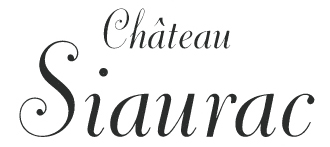
Overview
The estate is located on the plateau of Néac, which is a continuation of the famous plateau of Pomerol, and its vineyard is in a single, contiguous plot. It is the largest estate of the appellation and is comprised of 46 hectares of planted vine, a nineteenth-century château, and 15 hectares of romantic rolling parkland, home to centuries-old trees, an orangery and eighteenth-century landscaped woods. Château Siaurac is one of the most iconic estates of its appellation. Indeed, as remarked upon in Férét’s 1893 edition of Bordeaux et ses vins: “Château Siaurac is only separated by the first growths of Pomerol by a small trickle of water called the Barbane.”
From the bookkeeping records kept by Etienne Rabion from 1753 until 1759, we know that the winegrowing origins of Siaurac go back to the eighteenth century. In 2014, Artémis Domaines became co-manager of Château Siaurac and further enhanced the standing of this historic estate. The turning point came with the technical management agreement: Pénélope Godefroy joined the team from Château Latour to become Technical Director and Jean-Claude Berrouet, formerly oenologist at Pétrus, brought his advice and experience from the Right Bank as consultant-oenologist. Furthermore, organic and biodynamic cultivation techniques were introduced to the vineyard and the cellars also underwent renovation work. At the end of 2017, Artémis Domaines, led by Frédéric Engerer, took over management responsibility for the entire estate. Mr. Engerer is also in charge of the other Artémis Domaines estates; Château Latour in Pauillac, Château Le Prieuré in Saint-Emilion, Château Vray Croix de Gay in Pomerol, Château Grillet in the Rhône Valley, Domaine d’Eugénie and Clos de Tart in Burgundy and Eisele Vineyard in Napa Valley, California.

Château Siaurac Lalande de Pomerol
History: The largest and most emblematic family owned vineyard of the appellation
Location: On the extension of the Pomerol plateau, near Néac
Soils: Gravel, deep clays, and sandy clays
Surface Area: 46.18 ha
Viticulture by Plot: 40 plots, gradual conversion plan has been set up for Siaurac over a period of 5 years from 2016
Grape Varieties: 74% Merlot, 20% Cabernet Franc, 6% Malbec
Harvest: Mid-September to Early October (Merlot), from Early to Mid-October (Cabernet Franc & Malbec)
Average Yield: 30 hl/ha
Manager: Paul Goldschmidt
Technical Director: Pénélope Godefroy
Consultant: Jean-Claude Berrouet
Average Age of the Vines: 34 years old
Vinification: Controlled and gentle extraction
Average Production: 114,000 bottles
Tasting Notes: Black cherry, cassis fruit, pepper
Cellaring Potential: 2018-2035 +

Plaisir de Siaurac
Grape Varieties: 100% Merlot
Average Age of Vines: Less than 15 years
Vinification: Focused on capturing the fruitiness
Aging: 9 months in vats
Average Production: 61,100 bottles
Tasting Notes: Very round, fruity, delicious when slightly chilled in summer.
Food Pairings: Casual dinners, barbecues, ideal for parties.
Château Simon (Sustainable)
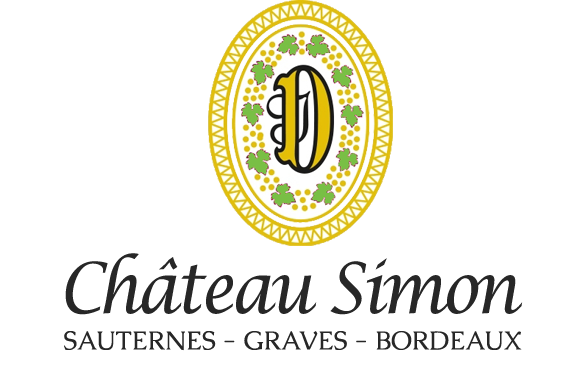
The Estate
Ideally positioned a few hundred meters from the village of Barsac in the Simon neighborhood, Château Simon has thrived here for 2 centuries.
Established in 1814, Château Simon began as a traditional French farm producing wine, fruits & vegetables. Over time, the estate has successfully prevailed as a strong wine producing specialist.
Today, the vineyard spans an impressive 33 hectares located on 3 major appellations: Sauternes, Graves, & Bordeaux. The vineyard produces wine varieties such as Sémillon, Sauvignon, Merlot, & Cabernet Sauvignon. Anne Laure Dufour-Bonnard & Pauline Dufour-Descamps remain loyal to their roots and honor their heritage by utilizing the invaluable knowledge and traditions of their ancestors alongside modern & innovative techniques.
Château Simon offers a large range of wines: Barsac-Sauternes, Graves Red, White & Sweet, Bordeaux Red, White & Rosé. For almost 3 decades, they have been an active member of the Vignerons Indépendant association.
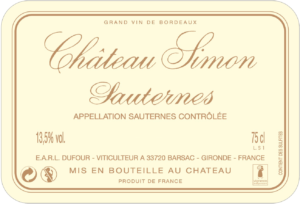
Château Simon Sauternes
Terroir: The vines are located in the Haut Plateau in the commune of Barsac on a unique clay and limestone soil resting on rocks with asterias (fossils).
Grape Varieties: 80% Sémillon, 18% Sauvignon Blanc, 2% Muscadelle
Viticulture: Sustainable viticulture techniques are widely used at the vineyard, where they implement modern bio-control solutions. Château Simon is proudly certified to High Environmental Value Level II.
Harvest: The grapes are handpicked with meticulous care, about 4-5 pickings. Only the overripe grapes are selected (botrytis cinereas).
Vinification: The botrytised grapes are delicately pressed for one night. After a cold soak, the must is fermented in thermo-regulated stainless steel tanks. The best pressings are selected and aged in oak barrels for 18 months.
Annual Production: 26,000 bottles
Winemaker Tasting Notes: “With a splendid gold robe, this wine has an intense nose of supple exotic fruits and citrus fruits. The attack is round and fruity with an ample evolution, rich and fresh. The finish is full of spicy notes and a delicate touch of freshness with a slight minty character.”
Food Pairings: This wine can be served as a brilliant aperitif with blue cheese. It is a perfect companion to white meats, spicy dishes, Asian cuisines and the traditional foie gras.
Château Siran
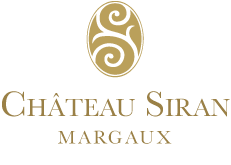
Overview
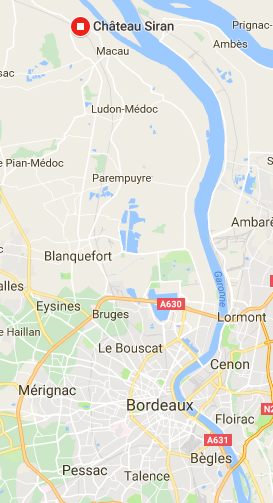
Located in the south of the Margaux appellation, on a plateau made up of gravelly outcrops, Château Siran possesses stunning terroir. Its 25 hectares in the Margaux appellation, 9 hectares in Bordeaux Supérieur and 2 hectares in Haut-Médoc are conducive to the production of delicate, fine and deliciously flavoursome wines. And it is to this end that Siran’s vineyard manager and cellar-master carry out their painstaking work throughout the seasons, bringing to the tables of wine enthusiasts, beginners and experts alike, the quintessence of our 36 hectare vineyard. Since 2013 the Château has re-opened its doors. Each visit is now an opportunity for us to help you get to know our heritage. From the terrace, with a panoramic view of the vineyard, to the heart of our new “Collections Cellar”, we are delighted to welcome you in a setting that combines the authentic with the modern.
History
On September 14th 1428, Guilhem de Siran swore a feudal oath in the church of Macau to the Abbot of Sainte-Croix de Bordeaux, to whom the parish was attached. At the end of the 17th century, the estate was already producing wine and was to enjoy a fine reputation in the 18th century, at a time when the Miailhe family settled in Bordeaux as wine brokers, a title granted to them by royal concession. It was in the 19th century, on the 14th January 1859 to be exact, that the Château was acquired by the actual family. Their ancestor, Léo Barbier, bought the estate for 100,000 francs from the Count and Countess de Toulouse-Lautrec, the grandparents of the famous painter, Henri de Toulouse-Lautrec. Ever since that time, generations of the same family have succeeded each other in a spirit of respect for the family wine-growing tradition.
Vineyard
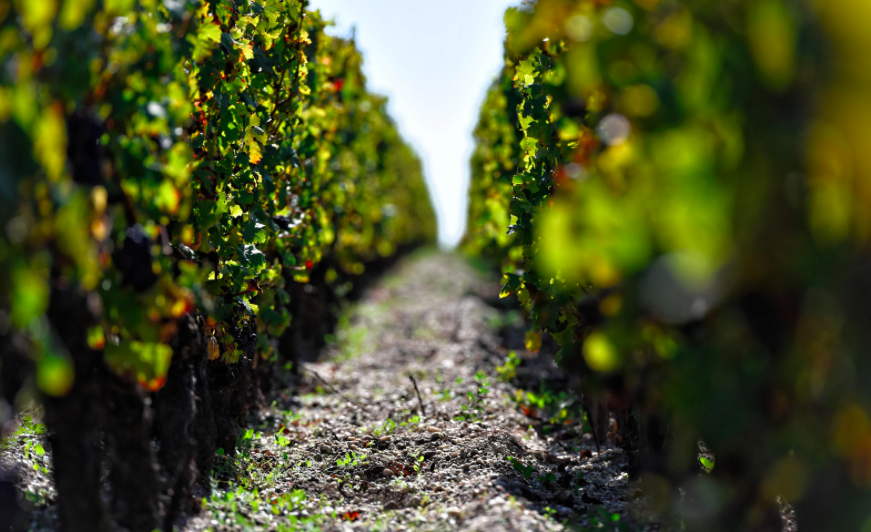 Some might say that luck was on the side of this vineyard, given its location a few miles north of Bordeaux on the famous Médoc peninsula and in the heart of the no less famous Margaux appellation. Its 25 hectares set in the Margaux appellation benefit from a terroir of amazing quality. Here, the soils are mainly made up of gravel and pebbles, which retain very little rainwater. The roots of the vines delve very deeply into the subsoil to find their nourishment, causing the vines to undergo the famous “water stress”, which is essential to the production of wines of truly great character.
Some might say that luck was on the side of this vineyard, given its location a few miles north of Bordeaux on the famous Médoc peninsula and in the heart of the no less famous Margaux appellation. Its 25 hectares set in the Margaux appellation benefit from a terroir of amazing quality. Here, the soils are mainly made up of gravel and pebbles, which retain very little rainwater. The roots of the vines delve very deeply into the subsoil to find their nourishment, causing the vines to undergo the famous “water stress”, which is essential to the production of wines of truly great character.
Grape Varieties
The vineyard also has its own particular grape composition:
- 46% Merlot
- 40% Cabernet Sauvignon
- 13% Petit Verdot
- 1% Cabernet Franc
Vinification and Aging
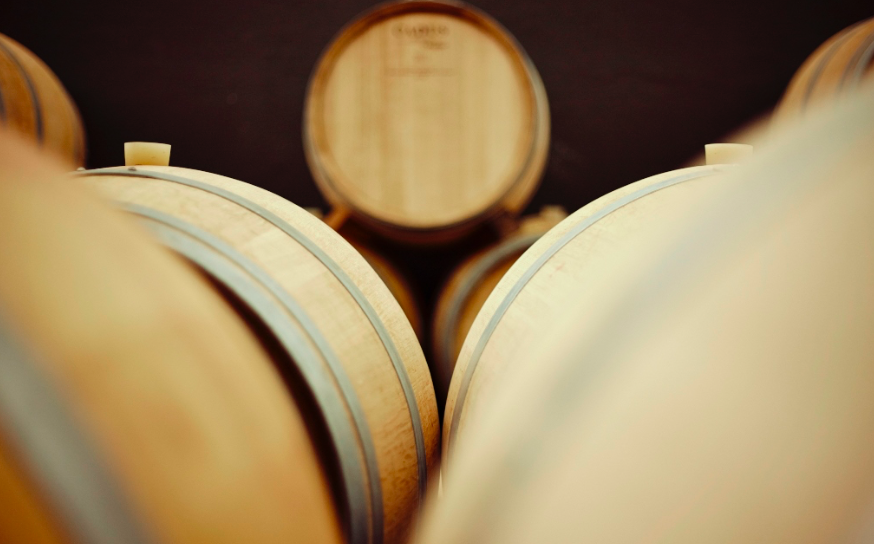 Nowadays, precision work begins in the vineyard itself -“plot by plot”. Only when the grapes have reached optimal ripeness is the decision taken to start the harvesting. The bunches are picked by hand in small crates and meticulously sorted both before and after the de-stemming process, so that only the finest grapes go into the vats.
Nowadays, precision work begins in the vineyard itself -“plot by plot”. Only when the grapes have reached optimal ripeness is the decision taken to start the harvesting. The bunches are picked by hand in small crates and meticulously sorted both before and after the de-stemming process, so that only the finest grapes go into the vats.
Though the wine-making remains traditional, the latest technology is carefully integrated to carry out a plot by plot vinification, to lavish even greater care on the grapes and to be able to extract the best from the fruit. This stage is followed by a period of ageing, which completes the wine-making process and enhances quality. This ageing is done in French oak barrels. Just the right degree of oak ageing is necessary for the balance of the wine’s tannins. Each generation at Siran has made every necessary effort to take this estate to the highest level.
The Wines
The grand vin is Château Siran, sourced from the Margaux vines with an average age of 31 years, and this goes into oak for 12-14 months with 35% new wood each vintage. The second wine S de Siran, also comes from the Margaux vines but these are younger, with a typical age of ten years. It too goes into oak for 12-14 months, but the proportion of new wood is naturally less, typically 15%. In addition, there are two other wines. First is the Bel Air de Siran, once produced from a few hectares of vines (70% Cabernet Sauvignon and 30% Merlot situated between Siran and Dauzac but entitled only to the Haut-Médoc appellation. Another is the Saint-Jacques de Siran, a Bordeaux Supérieur, which is sourced from 9.8 hectares entitled only to the Bordeaux Bordeaux Supérieur appellation. This vineyard is still characterised by sandy gravel, but with more clay, and the vines are 26 years old. It is fermented in steel, like its grander counterparts, and sees out 12 months in oak, including 15% new wood.

Chateau Siran Margaux
Winemaker Notes: “Produced from soils made up of a deep layer of gravel, the wines of Siran are typical of the great Margaux growths. Both powerful and delicate, they express the perfect balance between tannin, fruit and acidity. They are long-aging wines, which over time develop sweetness on the palate, giving a characteristic silky and velvety mouth-feel. Made from a subtle blend of Merlot, Cabernet Sauvignon and Petit Verdot, Château Siran generally expresses finesse, femininity and silkiness rather than the raw power and virility of some Médoc wines. The high percentage of Petit Verdot, which can be as much as 15% of the final blend in some years, brings a spicy finish which enhances the unique character of the wines of Château Siran. Château Siran displays charm when young but is also a wine of very long aging potential. Wine enthusiasts particularly appreciate the complexity of its aromas that it develops over time.”
Proprietor: Famille Miailhe SCEA Château Siran
Managing Directors: Edouard & Brigitte Miailhe
AOC Margaux Area: 25 hectares
Soil: Deep gravel
Grape Varietals: Merlot, Cabernet Sauvignon, Petit Verdot, Cabernet Franc
Average Age of the Vines: 31 years
Harvest: Hand picking into 60 liter crates
Vinification: Thermo-regulated stainless steel vats
Aging: 12 months in oak barrels, 35% new barrels
Annual Production: 90-95,000 bottles

S de Siran
Winemaker Notes: “S de Siran is the Second Wine of Château Siran, and is also from the Margaux appellation. It is sourced from the vineyard’s young plots and from a selection of the First Wine that varies according to the vintage. The average age of the vines is between 5 and 15 years and, depending on the vintage, the volume of S de Siran is 30 to 40% of the total volume of production of the estate’s Margaux appellation wine. The grape composition is a blend of Merlot, Cabernet Sauvignon and Cabernet Franc. This wine, which we look on as the little brother of the First Wine, is made with the same care and attention that the First Wine receives. It displays both charm and complexity and generally should be enjoyed within 5 to 7 years of age. Ideal drunk young and popular with numerous restaurants, it pairs well with white and red meats as well as with pasta dishes, pies and soufflés.”
Proprietor: Famille Miailhe SCEA Château Siran
Managing Directors: Edouard & Brigitte Miailhe
AOC Margaux Area: 25 hectares
Soil: Deep gravel
Grape Varietals: Merlot, Cabernet Sauvignon, Petit Verdot, Cabernet Franc
Average Age of the Vines: 10 years
Harvest: Hand picking into 60 liter crates
Vinification: Thermo-regulated stainless steel vats
Aging: 12 months in oak barrels, 15% new barrels
Annual Production: 30-35,000 bottles

Saint-Jacques de Siran
AOC: Bordeaux Supérieur
Production Area: 9 hectares
Location: Sourced from plots belonging to the estate located on the border of the Margaux appellation.
Soil: Over the centuries, the alluvial soils coming from the Garonne River have covered over the gravel to make a soil which is now made up of clay. This complex terroir produces rich and well-structured wines.
Grape Varieties: Merlot, Cabernet Sauvignon, and Cabernet Franc, the proportions of which vary according to the vintages.
Average Age of the Vines: 26 years old
Annual Production: 25-30,000 bottles
Harvest: Hand picking in 60 liter crates and harvesting machine
Vinification: Traditional, in temperature-controlled vats. Maceration lasts 25 days.
Aging: In barrels for 10-12 months and tank with stave.
Serving Suggestion: This wine is best enjoyed within 4 to 5 years of its production. Its softness and complexity make Saint Jacques de Siran a popular choice among wine lovers.

Bel Air de Siran Haut-Médoc
Technical Team: Jean-Luc Chevalier and Marjolaine Defrance
Managing Team: Edouard Miailhe and Brigitte Miailhe
Overview: This vineyard has belonged to the Miailhe family for six generations. Carefully vinified by Siran’s team who mainly grow Merlot and Cabernet Sauvignon to create a fine and elegant wine with a long finish.
Location: Produced from a few hectares of vines situated between Siran and Dauzac but entitled only to the Haut-Médoc appellation.
Appellation: Haut-Médoc
Production Area: 0.5 hectares
Soil: Terrace of deep sandy gravel soil.
Grape Varieties: Merlot 100%
Average Age of the Vines: 25 years old
Plant Density: 9,000 feet/hectare
Viticulture: Sustainable viticulture with chemical treatments except for the compulsory treatment for “flavescence dorée”. Soil ploughing; organic fertilization; ventilation of vegetation: manual trimming, leaf stripping and cluster thinning; voluntary crop limitation.
Pruning Method: Guyot double Bordelais with disbudding.
Harvest: Manual harvest in small crates with manual sorting on table. Intra-plot selection.
Vinification: Fermentation in stainless steel vats. Pumping over and releasing depending on the batches. Vatting period of 18 to 24 days.
Aging: 12 months with French new oak wood.
Château Sociando-Mallet
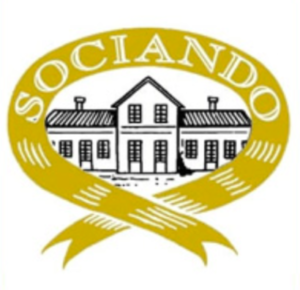
Overview
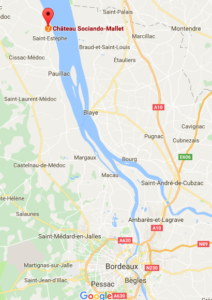 Jean Gautreau discovered Sociando-Mallet in the village of Saint-Seurin-de-Cadourne in 1969 when looking for a wine estate to buy on behalf of a Belgian client. It was love at first sight, despite the fact that the property was in a sorry state. However, the terroir was excellent and the domain afforded a magnificent view overlooking the Gironde Estuary. Jean Gautreau immediately decided to acquire it for himself for 250,000 French francs.
Jean Gautreau discovered Sociando-Mallet in the village of Saint-Seurin-de-Cadourne in 1969 when looking for a wine estate to buy on behalf of a Belgian client. It was love at first sight, despite the fact that the property was in a sorry state. However, the terroir was excellent and the domain afforded a magnificent view overlooking the Gironde Estuary. Jean Gautreau immediately decided to acquire it for himself for 250,000 French francs.
There were only 5 hectares of vines at the time. Jean Gautreau expanded the vineyard year after year by buying vines from his neighbours. Seeking the best possible quality, he also renovated the estate’s buildings, built a barrel cellar, and gradually improved the choice of grape varieties, matching the appropriate ones to each vineyard plot.
Today, the property is comprised of 83 hectares producing nearly 450,000 bottles a year of Château Sociando-Mallet and the second wine, Demoiselle de Sociando-Mallet. Jean Gautreau sold his négociant business in 2000 and now focuses entirely on managing his wine estate.
Château Sociando-Mallet is in the commune of Saint-Seurin-de-Cadourne, ten kilometres north of Pauillac, in the Haut-Médoc appellation. A document dating from March 1633 refers to land here belonging to an aristocrat of Basque origin named Sociondo. A member of his family was Bishop of Bayonne. Another document, from 1750 mentions vines belonging to Demoiselle Anne de Sossiondo. Due to various misspellings over the years, “Sossiondo” became “Sociando”.
The Terroir
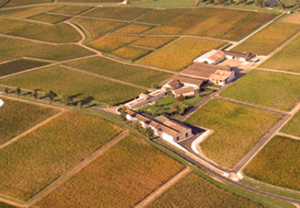 Sociando-Mallet has throned on the Butte de Baleyron, one of the finest gravelly terroirs in the Médoc, since the 17th century. Situated in the commune of Saint-Seurin-de-Cadourne, north of Pauillac, the vineyard overlooks the Gironde estuary on a bend in the river.
Sociando-Mallet has throned on the Butte de Baleyron, one of the finest gravelly terroirs in the Médoc, since the 17th century. Situated in the commune of Saint-Seurin-de-Cadourne, north of Pauillac, the vineyard overlooks the Gironde estuary on a bend in the river.
Sociando-Mallet’s terroir consists of Günz gravel over a deep layer of clay-limestone soil. This terroir perfectly regulates water supply and enables Cabernet Sauvignon to ripen extremely well and Merlot to acquire depth and complexity. This terroir is Sociando’s soul. It provides the wine with complex structure, freshness, and elegance.
Primarily located east of the village of Saint-Seurin, the property stretches over a total of 120 hectares, of which 83 are under vine. The vines grow on the superb Baleyron gravelly hillock around the house and winery buildings. Sun exposure is optimum and breezes off the estuary keep the vines well aired and healthy. The huge mass of water in the estuary and nearby ocean accounts for a temperate microclimate without wild swings in temperature. Grape varieties consist of 42% Cabernet Sauvignon, 54% Merlot, and 4% Cabernet Franc. The vines are an average 35 years old. The average vine density is 8,333 vines per hectare. This corresponds to 1 metre between vine rows and a distance of 1.2 metres between plants within a row. This high density increases the surface of the leaf canopy and creates a competition between vines, conducive to the production of grapes with a high content of tannin, sugar, colour and aromas.
The Winemaking Process
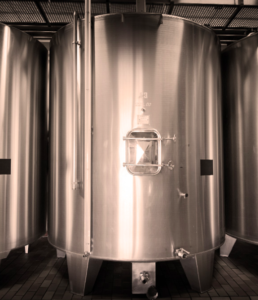 Sociando Mallet is vinified traditionally. Only native yeast and bacteria naturally present on the grapes and at the estate are used. Sociando-Mallet has stainless steel and concrete vats, both of which are temperature-controlled. Once the wine is put into vat, the crushed grapes start to ferment thanks to the presence of yeast. The skins and pips float to the surface and form a cap above the must (fermenting grape juice). The vats are pumped over daily to extract colouring matter and aromas from this cap. Pumping over consists in spraying the cap with must taken from the bottom of the vat.
Sociando Mallet is vinified traditionally. Only native yeast and bacteria naturally present on the grapes and at the estate are used. Sociando-Mallet has stainless steel and concrete vats, both of which are temperature-controlled. Once the wine is put into vat, the crushed grapes start to ferment thanks to the presence of yeast. The skins and pips float to the surface and form a cap above the must (fermenting grape juice). The vats are pumped over daily to extract colouring matter and aromas from this cap. Pumping over consists in spraying the cap with must taken from the bottom of the vat.
The wine stays on the skins for an average of 25-30 days depending on the vat and the vintage.
Then comes the running off when the free run wine is separated from the pomace (skins and pips). The press wine is produced by putting the pomace through a winepress. These wines are then put into vat for malolactic fermentation. This secondary fermentation occurs spontaneously due to friendly bacteria naturally present in the wine, which transform malic acid into lactic acid. This therefore makes the wine smoother and more balanced.
After this malolactic fermentation, lots chosen to become Sociando-Mallet are put into 100% new French oak barrels and aged for approximately 12 months. Only a quarter of the wine destined to be sold as Demoiselle de Sociando-Mallet is aged in new oak. The remainder is aged in vats until the blending to preserve this wine’s suppleness and fruitiness.
Aging
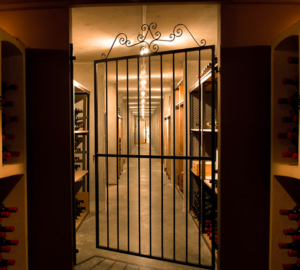 For the first 3 or 4 months, the barrels are kept with a glass bung on top. As the new oak absorbs a lot of wine at the beginning of ageing, the amount that evaporates is replaced twice a week in a process called topping up. After this period, we close the barrels with a wooden bung and we store it “bung on the side» to limit the evaporation and protect the wine from oxidation.
For the first 3 or 4 months, the barrels are kept with a glass bung on top. As the new oak absorbs a lot of wine at the beginning of ageing, the amount that evaporates is replaced twice a week in a process called topping up. After this period, we close the barrels with a wooden bung and we store it “bung on the side» to limit the evaporation and protect the wine from oxidation.
The wine is racked twice a year during ageing to separate it from the lees at the bottom of the barrel or vat. For the barrels, this operation is done the traditional way using gravity flow via the esquive, a small bunghole. At Sociando-Mallet, the esquive bungs are wrapped in dried reeds (called matrasse locally) to make the seal airtight. This plant, Typha latifolia (or broadleaf cattail in English), grows in marshland and ditches along the banks of the Gironde. Cellar workers pick the leaves twice a year.
The wine is not fined and is only lightly filtered before bottling to retain all its intrinsic qualities and preserve its outstanding ageing potential.
Cellar aging
La Demoiselle is aged for 15 months and Sociando-Mallet for 18 months before bottling at the château. Special attention is paid to the quality of the corks, which are purchased according to strict specifications. They must be good enough to ensure perfect ageing for long periods, sometimes more than 40 years.

Château Sociando-Mallet Haut-Médoc
Grape Varieties: 54% Merlot, 42% Cabernet Sauvignon, and 4% Cabernet Franc
Aging: 100% in new French oak barrels for 12 month
Food Pairings: Beef & Venison
Tasting Notes: Château Sociando-Mallet produces full-bodied wines with a deep, dark color. Their complex bouquet is usually dominated by black fruit aromas with a touch of minerality and well-integrated, elegant oak. Often somewhat “virile” when young, the wines gain in balance and complexity with age. They are fresh, straightforward, and have a wonderful length.
Cellaring Potential: Château Sociando-Mallet has always been a wine with great aging potential. A wine to be enjoyed even after 30 years in great vintages.

La Demoiselle de Sociando-Mallet Haut-Médoc
Overview: The Demoiselle de Sociando-Mallet is produced from the younger vines of the property and the plots whose soil is more favorable to the production of very good Merlot. These vines receive the same care and are tended in the same way as the rest of the vineyard throughout the year. The “demoiselle” is a sort of dragonfly found in the Médoc. Like the dragonfly, this wine of the same name is light and elegant.
Production Area: 20 hectares
Grape Varieties: 54% Merlot, 42% Cabernet Sauvignon, and 4% Cabernet Franc
Average Age of the Vines: 35 years old
Aging: The aging of the Demoiselle de Sociando-Mallet is carried out mainly in vats, to preserve the freshness and fruitiness of the Merlot.
Serving Suggestions: This easy-drinking wine can be enjoyed young. It is an ideal match for grilled meat and fish or shellfish dishes.
Château Soutard
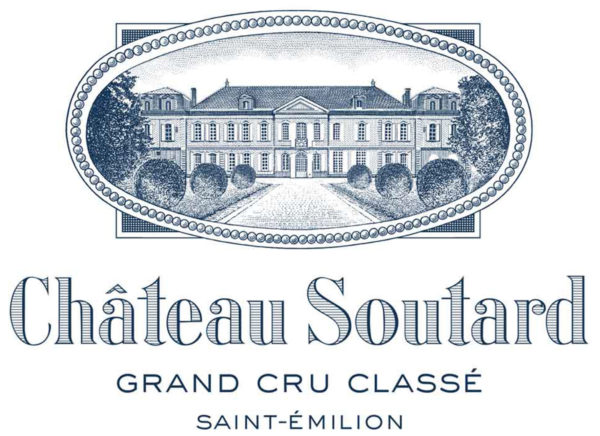
The Estate
The origins of Château Soutard are ancient, with the first traces dating back to 1513. The estate was acquired in 2006 by the insurance group AG2R La Mondiale which has continued to undertake major renovations. In 2012, the purchase of the Cru Classé Cadet Piola brings the vineyard to 30 hectares situated on the clay and limestone plateau of Saint-Émilion. The cellar is managed by Véronique Corporandy who is advised by Michel Rolland. The Second Wine, produced from the younger vines of the chateau, is a Saint-Émilion full of charm that can be served and appreciated while young.

Château Soutard Saint-Émilion Grand Cru Classé
General Manager: Bertrand de Villaines
Production Area: 30 hectares
Terroir: 70% clay-limestone plateau; 17% clay-rich slopes; 13% of vines on sandy soils
Grape Varieties (since 2012): 63% Merlot, 28% Cabernet Franc, 7% Cabernet Sauvignon, 2% Malbec
Average Age of the Vines: 35 years old
Plant Density: 6,500 vines per hectare
Viticulture: Traditional farming methods in order to respect the soils, the vineyard, and wild life. Early shedding and disbudding. Adapted green bunches of grapes removal process. Early thinning out and leaf removal. Green harvest.
Harvest: By hand; grapes are sorted in the vineyard and in the vat room.
Aging: 18 months aging in French oak barrels coming from 8 different cooperages.

Les Jardins de Soutard
Production Area: 30 hectares
Terroir: 70% clay-limestone plateau, 17% clayey hillside, 13% sandy coastline
Grape Varieties: 63% Merlot, 28% Cabernet Franc, 7% Cabernet Sauvignon, 2% Malbec (percentages vary depending on the vintage)
Average Age of the Vines: 35 years old
Plantation Density: 6,500 plants/hectare
Harvest: The cultivation methods are traditional, reasoned and ensure the greatest respect for the soil, the vine, and the terroir. The harvest is manual with sorting done in the vineyard and the winery.
Aging: In French oak barrels, from 8 different cooperages, lasting an average of 18 months.
Tasting Notes: Deep ruby color. On the nose, a seductive and full-bodied bouquet of ripe red fruit and spices. On the palate, there is roundness, power, and a touch of freshness on the finish.
Food Pairings: With grilled steak, wild game, etc.
Cellaring Potential: 5-10 years

Petit Soutard Saint-Émilion
Overview: Petit Soutard is the second wine of the estate and is produced from a selection of Veronique Corporandy, Technical Director of the estate. It is vinified by the team of Château Soutard and Château Larmande, Grands Crus Classés de Saint-Emilion.
Appellation: Saint-Emilion
Production Area: 30 hectares
Grape Varieties: 80% Merlot, 20% Cabernet Franc
Aging: 5 months in oak barrels
Tasting Notes: Rich and lively black cherry, blackberry, and raspberry notes. Silky texture.
Serving Temperature: Serve between 16 and 18°C
Château Taillefer
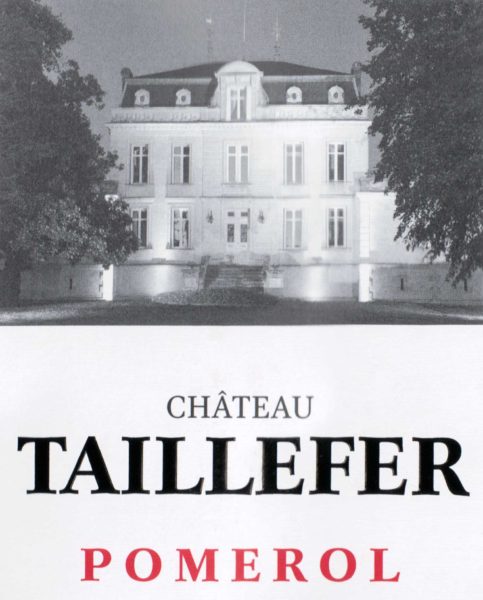
The Estate
The Bordeaux wine merchant Antoine Moueix acquired Château Taillefer in 1923 because he could see the great potential of this terroir. Situated on the plateau of Pomerol, this historic property was first recognized in 1776 by the geographer of Louis XV, and has been conserved with great care for over 2 centuries.
The estate spans 12 hectares and is planted mainly with Merlot and Cabernet Franc vines. The soil is rich in iron, a characteristic typical of the terroir of Pomerol. This fact that inspired the name of the estate: “Taillefer” comes from the French phrase “to cut iron.” The high iron content imparts complexity to the wine together with minerality and aromas of truffles and violets.

Chateau Taillefer Pomerol
Production Area: 11.5 hectares
Grape Varieties: 75% Merlot and 25% Cabernet Franc
Average Age of the Vines: About 30 years old
Soil: Sand and gravel soil with rich iron deposits
Plantation Density: 6,000 vines per hectare
Harvest: Traditional methods are favored with a mechanical tilling of the soils and manual tending to the vines. For each vintage, each plant is trained and cared for by man during some fifty successive field operations.
Vinification: Temperature controlled, traditional concrete vats. Malolactic fermentation takes place in a combination of cement vats and French oak barrels.
Aging: The wine is aged in French oak barrels for about 12 months.
Annual Production: About 4,000 cases
Château Taussin Marssot

The Estate
Château Taussin Marssot is one of 6 chateaux owned by Famille Rochet.
It all started in 1865 with an exceptional couple, Jacques and Françoise Rochet. This duo bought a property between Dordogne and Garonne, recognized for the richness of its soils and its exceptional terroir (formerly owned by the Benedictines of the medieval city of La Réole). They operate and build their family history around 3 founding values: work, adaptability, and openness to the world. Thanks to the transmission of their know-how and their family values, generations of winegrowers succeed one another, and the estate now has 6 chateaux on more than 100 hectares.
Concerned with preserving and transmitting the quality of the vineyard to their children, the Rochet family has chosen to adopt reasoned agriculture, more respectful of the environment, thus allowing the production of quality wines while participating in the improvement of the economic and social fabric of the rural world. Their goal is to offer an alliance between satisfaction and pleasure, from the human hand to the tasting of their authentic wines, and faithful to the values of the Bordeaux vineyard.

Château Taussin Marssot Bordeaux
Grapes: Merlot, Cabernet Sauvignon
Vinification: Traditional wine making process in thermo-regulated stainless steel vats. Maceration at 8°C during 5 days. Alcoholic fermentation during 15 days at 25°C.
Tasting Notes: Its ruby-red color still conserves the purple notes of its youth. Red fruit and berries come together to create the freshness of its flavor. The first impression in the mouth is a marked fruity flavor with cherry notes typical of Merlots, which give way to smooth tannins enveloped in its long finish.
Food Pairings: Pairs well with roasted vegetables, and is fantastic with barbecued meats as well!
Clos du Moulin Aux Moines (Biodynamic)

The Estate
A hotspot for the history of Burgundy, Moulin aux Moines is located in the heart of the Côte de Beaune, in the village of Auxey-Duresses. This mythical “clos” has been farmed and harvested since its plantation by the monks of the Abbey of Cluny, and then by those of the Abbey of Citeaux since 962, continuing for 6 centuries until present day. This unique area was chosen by the monks because of the environment’s qualities/features: a noble abode in the intersection of two valleys at the heart of the Cote de Beaune wine region, walled in by the Clos and penetrated by the Clous River which nourished the mill.
The year 2008 marked the revival of the domaine with the arrival of a new team. The idea was to restore the ancient values of its legendary wines, in the spirit of organic and biodynamic philosophy.
In 2009, after several years at domaine de Montille, Willy Roulendes joined Moulin aux Moines to manage the vineyards and the cellar, bringing his personal touch to produce vibrant terroir wines. With his arrival began the first year of conversion to organic certification. The winery has been certified Ecocert since 2012 and certified Demeter since 2021. The wines are also 100% vegan although not certified.
The domaine increased in size bit by bit over the years and now spans 15 hectares, extending from Pernand-Vergelesses to Corpeau, a village in the south of Puligny-Montrachet.

Aligoté
Location: The Aligoté is produced from 2 vineyards grown organically: Les Fas in Pommard (older vines planted at an altitude of 330m) and Clos de la Perrière in Corpeau (located south of Puligny-Montrachet, first planting in the late 1960’s. The grapes have a higher level of acidity here).
Soil: Limestone
Grape Variety: 100% Aligoté
Harvest: Manual
Vinification: The grapes are pressed slowly and then the juice is transferred to stainless steel tanks for gentle settling. Fermentation at a controlled temperature of 20-22°C with the use of indigenous yeasts. No sulfur added.
Aging: Steel tanks and a small portion in wooden barrels for 10 months.
Alcohol: 11.5%
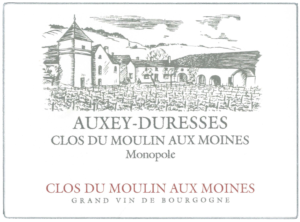
Auxey-Duresses Blanc Moulin aux Moines
Location: The Auxey-Duresses “Moulin aux Moines” vineyard is one of the Domaine’s four monopoles (vineyards exclusively owned by the Domaine). It is situated on the border of Meursault, and thus it shares a similar terroir.
Surface Area: 0.80 ha
First Planting: Early 2000s
Soil: Marl-limestone
Altitude: 298 meters above sea level
Grape Variety: Chardonnay
Exposure: North /northeast
Plant Density: 10,000 vines/ha
Harvest: By hand, towards September
Yield: 30 – 35 hl/ha
Aging: 12-15 months in oak barrels (0-5% new wood)
Bottles Produced: 1,800
Alcohol Content: 12.5%
Cellaring: 4-6 years
Tasting Notes: This wine possesses a superior aromatic complexity and is very expressive. The mouth has ripe fruits aromas, with nuts and fresh almond, complemented by notes of cloves, pepper, dry galangal (strong Malaysian herbal plant), vanilla, balsamic, sweet citrus fruits, mandarin, and gentian. This is a dense wine – harmonious and especially elegant.

Auxey-Duresses Rouge Moulin aux Moines Vieilles Vignes
Location: The Auxey-Duresses “Moulin aux Moines” vineyard is one of the Domaine’s 3 monopoles (vineyard exclusively owned by the Domaine. The “vielles vignes” section of the monopole was planted in the 1950’s in the upper part of the clos where the terroir is of a different composition, on a steeper canter, dryer and not to mention closer to the bedrock, supplying the wine with a deeper aromatic complexity pivotal to its character.
Surface Area: 0.90 ha
First Planting: 1950
Soil: Marl-limestone
Altitude: 298 meters above sea level
Grape Variety: Pinot Noir
Exposure: Northeast
Plant Density: 10,000 vines/ha
Harvest: By hand, towards September
Yield: 38 – 44 hl/ha
Aging: 16 – 18 months in barrel, no new wood
Bottles Produced: 4,000
Alcohol Content: 12.5- 13.5%
Cellaring: 10 years
Tasting Notes: The aromatic profile is very complex and extensive. The mouth is full of notes of ripe black fruit, cherry juice, and eau de vie. Also to be found are notes of roasted meats and almond that shape the frame of the tannic structure, providing more roundness and finesse than wines from the neighboring vineyard.
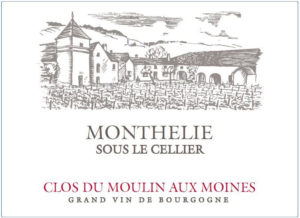
Monthélie Sous Le Cellier Blanc
Appellation: Monthélie
Location: this wine is produced from a plot located north of the Monthélie appellation. The slope is significant (330 meters above sea level), with an exposure to the west. The climate “Sous le Cellier” takes its name from its proximity to the cellar of the houses, since it is located at the exit of the village.
Size of Plot: 0.69 hectares
Grape Variety: 100% Chardonnay
Vines: Planted between 2003 and 2015
Plant Density: Around 10,000 vines/ha
Yields: Controlled at 42-48 hl/ha
Soil: Sandy / silty / limestone
Viticulture: Certified organic and biodynamic.
Harvest: Manually done with a rigorous sorting of the grapes.
Vinification: The direct pressing is long and progressive, so the musts oxidize slowly and naturally. Fermentation starts in 350 liter oak barrels, with the use of indigenous yeasts.
Aging: 10 months, no fining or filtration.
Tasting Notes: A delicious white with floral notes, with a nice roundness and a discreet woodiness!
Alcohol: 13%
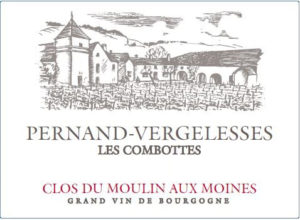
Pernand-Vergelesses Blanc Les Combottes
Appellation: Bourgogne Pernand-Vergelesses
Plot: The plot, whose vines are around 40 years old, is located on a hillside extending that of Corton Charlemagne.
Soil: White marl on clay-limestone soil
Grape Variety: 100% Chardonnay
Harvest: Manually done in September
Yield: 40 hl/ha
Viticulture: Certified organic and biodynamic
Vinification: The fermentation is long and gentle in steel tank.
Aging: In oak barrels for 12-18 months (15% new wood)
Alcohol: 13%
Cellaring: 4-7 years
Tasting Notes: This wine is mineral, fragrant, dry and balanced. With age, it develops notes of flinty stone and toasted almonds. it is the perfect accompaniment to seafood (especially shelfish).
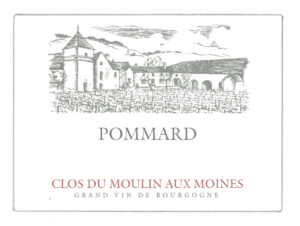
Pommard
Location: The Pommard Village is a blend of fruit from very compatible vineyards. The smallest plot is on “Croix Planet” vineyard, which produces fat and full wines. The plots of “Vaumuriens” and “Vignots” are old vines that give delicacy and structure to the final blend. The plot “La Vache”, which is a “climat” located on the hill-centre of the terroir, assures a rather mineral wine.
Surface Area: 1 ha
First Planting: 1947, 1983, 1988, 1999
Soil: Clay-limestone
Altitude: 270, 330, 353, 362 meters above sea level
Grape Variety: Pinot Noir
Exposure: East, north
Plant Density: 10,000 vines/ha
Harvest: By hand, towards September
Yield: 36 – 40 hl/ha
Aging: 12-15 months in oak barrels (5% new wood)
Bottles Produced: 4,150
Alcohol Content: 12.5%
Cellaring: 5-10 years
Tasting Notes: What stands out in the Pommard Village is it’s tannic structure with a particular rustic character typical of the terroir, whilst holding its elegance firmly intact with the touch of its silky interior. It sports a very pleasing acidity with juicy cherry and cocoa aromas, and will be serenity in a bottle after 2-3 years nesting in the cellar.
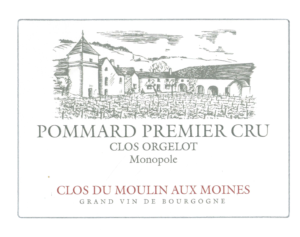
Pommard 1er Cru Clos Orgelot Monopole
Location: One of the Domaine’s emblematic cuvees; this wine is one of the monopoles (only producer of this wine). This plot of Pommard 1er Cru, slightly larger than 1 hectare, is said to be “among the most renowned areas of Pommard” (“The Bible”, Dr. Denis Morelot, 1831). This famous vineyard has an exceptional situation, located just above Pommard Epenots, between Les Pézerolles and Beaune 1er Cru “Clos des Mouches”. These old vines produce a very fine, structured, and elegant wine.
Surface Area: 1.1 ha
First Planting: 1921,1990,1993
Soil: Clay-limestone
Altitude: 310 meters above sea level
Grape Variety: Pinot Noir
Exposure: East
Plant Density: 10,000 vines/ha
Harvest: By hand, towards September
Yield: 25 – 30 hl/ha
Aging: 18-22 months in oak barrels (10-15% new wood)
Bottles Produced: 1,600
Alcohol Content: 13.5%
Cellaring: 10 years +
Tasting Notes: The “Clos Orgelot” vineyard develops aromas of ripened berries, acacia catechu, and exotic sandalwood. It has a rich structure that is curvaceous and velvety, and finishes with an enduring strength.
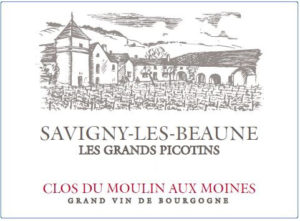
Savigny-les-Beaune Les Grands Picotins
Appellation: Savigny-les-Beaune
Soil: Clay limestone
Yield: 34-38 hl/ha
Grape Variety: 100% Pinot Noir
Viticulture: Certified organic and biodynamic
Harvest: Manually done in September; sorting on the vine as well as in the cellar.
Vinification: Depending on the temperature of the grapes, the musts can be lowered to 14 degrees Celsius in order to delay the start of fermentation and prolong the time of maceration. In order to bring out the elegance of the Pinot Noir, the pigeage is light and manually done. The focus is primarily placed on the daily pumping over. Vinification lasts between 15-25 days depending on the vintage.
Aging: The wine is aged in oak barrels (10-20% new wood) for 20-22 months. Bottling on the estate in the spring.
Cellaring: 2 to 5+ years
Tasting Notes: This wine displays a bouquet of ripe red fruit. On the palate, it is vibrant and pure.
Alcohol: 13.5%
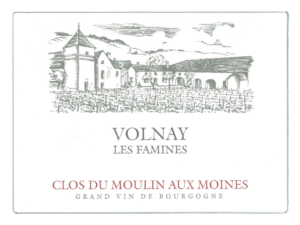
Volnay Les Famines
Soil: Clay-limestone
Yield: 34-38 hl/ha
Harvest: Manually done in September. Sorting in the vineyard as well as in the cellar. Grape harvest 70 to 90% depending on the vintage.
Vinification: Depending on the temperature of the grapes, the must can be lowered to 14°C in order to delay the start of fermentation and lengthen the maceration time. In order to work on the elegance of Pinot Noir, the punching down is light and manual. The main emphasis is on daily pumping over.
The vinification takes place over a long period, between 15 and 25 days depending on the vintage. Naturally, the musts rise in temperature in order to fix the color and the aromas. Once pressed, the wine is transferred, as much as possible by gravity, to old barrels and is not racked for the 12 months of aging. Bottling takes place in the spring.
Aging: In oak barrels for 20 to 22 months (10-20% new wood)
Alcohol Content: 13.5%
Acidity: 5.4 g/l
Cellaring: 5-10 years
Tasting Notes: An exceptional nose that reveals aromatic notes of wild red fruits. On the palate, it is an explosion of ripe black fruits. Delightful, lingering finish.
Clos Fourtet
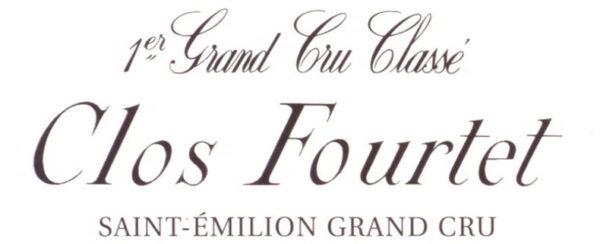
The Estate
Clos Fourtet owes its initial reputation to the Rulleau and Carles families, Lords of Figeac. In the 18th century, they were the first to make the most of this land with only a thin layer of arable soil, but blessed with outstanding natural drainage. Clos Fourtet has abundantly proved its standing as a Premier Grand Cru Classé, helped in this respect by hard work and major investments by the Cuvelier family, owners since 2001.
Located atop the limestone plateau well-known for producing some of the greatest wines in Saint-Émilion, Clos Fourtet has one of the appellation’s best and most famous terroirs.
The vines, located in a single block a stone’s throw from the medieval village, grow atop impressive underground quarries.
Winemaking is very traditional, but complemented by the most up-to-date techniques. In keeping with Clos Fourtet’s inherently strong personality, it is aged entirely in new oak barrels. The wine is extremely elegant, with incomparable minerality and freshness.

Clos Fourtet Premier Grand Cru Classé Saint-Émilion
Owner: Philippe Cuvelier
Manager: Matthieu Cuvelier
Appellation: Saint-Émilion – 1er Grand Cru Classé
Situation: Set upon the highest slope of western Saint-Émilion
Production Area: 19 hectares
Soil: Limestone and clay
Grape Varieties: 85% Merlot, 10% Cabernet Franc, 5% Cabernet Sauvignon (percentages vary depending on the vintage)
Plant Density: 6,000 vines / hectare
Average Age of Vines: 25 years
Oenologists: Jean-Claude Berrouet and Stéphane Derenoncourt
Harvesting: By hand, using small baskets
Sorting: By hand and optical sorting machine
Vinification: Whole grape fermentation in 25 thermo-regulated stainless steel vats of small capacity. Manual extraction using the ‘pumping down’ technique to preserve a maximum of optimal raw material. 25-30 days in vats. Malolactic fermentation in barrel.
Aging: 60-80% new oak barrels for 14-18 months in underground caves
Production: 2,500-4,000 cases of Grand Vin
Comte Senard (Organic)
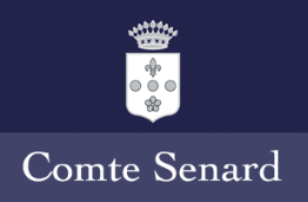
The Estate
In 1857, Jules Senard (great grandfather of the current owner) acquired the original Corton Clos Des Meix vineyard. Covering an area of just under 2.5 hectares, the vineyard has been a monopole ever since.
Over the years, the addition of prestigious appellations such as Corton Clos Du Roi, Corton Bressandes, and Corton Paulands has increased the prestige and excellent reputation of the Comte Senard estate. These acquisitions, carefully thought over and discussed among the family, have allowed them to offer an incomparable selection of the very best wines, spread over 9 hectares of prime vineyards.
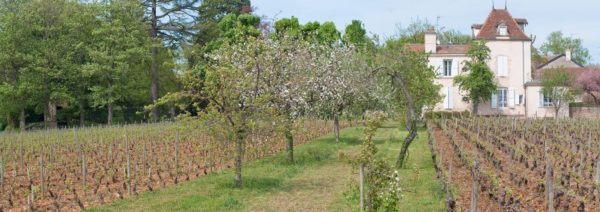
In 1971, Philippe Senard assumed management of the estate and personally took over the vinification process. His daughter Lorraine joined the family business in 2000, and succeeded him as manager in 2005 with an approach very much inspired by the previous generation’s respect of the land and desire to keep the Corton spirit alive. Lorraine’s first white wine vinification was the 2002 vintage, and 2005 for the red.
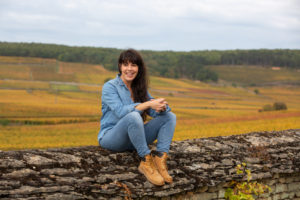
The estate has been organic since 2017, and will be certified in 2023. The Grand Cru vineyards of Corton Blanc and Corton Clos Des Meix are farmed biodynamically but are not certified.
Comte Senard Philosophy
The most important aspect of fine winemaking is the quality of the raw materials. The respect and great care that the winemakers bestow upon the vines ensures exceptional grape quality, which translates to rich and opulent wines.
Comte Senard has the goal of remaining respectful of the environment. With this objective in mind, they have opted for a sustainable-organic approach in the vineyard. They do not use herbicides or insecticides, they cultivate sustainable grass-covering, and utilize ploughing techniques throughout the estate.
Like her father Philippe before her, Lorraine Senard is an enthusiastic believer in initial cold-soaking and temperature control during the fermentation phase, and has been employing these methods since 2005. This approach not only enhances the color of the Corton and Aloxe-Corton, but also increases the aromatic complexity and taste of the wine – all qualities required for expressive wines with aging potential.

Aloxe-Corton Les Caillettes Pinot Gris
Overview: The only white Aloxe-Corton made from 100% Pinot Gris grape variety, called Pinot Beurot in Burgundy. The wine has subtle persistence, low acidity, and great finesse. Perfect as an aperitif, or paired with seafood.
Production Area: 0.23 hectares
Grape Variety: 100% Pinot Beurot
Average Age of the Vines: 70 years old (first planting 1913)
Average Yield: 600 bottles
Harvest: Following a thorough checking of the vine’s maturity, harvesting is carried out by hand. A first sorting is done manually by the harvesting team, followed by a second sorting when the grapes arrive at the winery with the help of a sorting table.
Vinification: Gentle and rapid pressing. Fermentation in 350-liter barrels.
Aging: 12 months in oak barrels (50% new wood)
Tasting Notes: On the palate, very round and fresh with notes of exotic fruits. Long on the finish. Very good cellaring potential.
Food Pairings: Foie gras, white fish, scallops
Cellaring: 1-7 years

Meursault
Overview: Its aromatic intensity, balance, and crisp freshness make this Chardonnay an amazing white to keep in your cellar.
Grape Variety: 100% Chardonnay
Harvest: Following a thorough checking of the vine’s maturity, harvesting is carried out by hand. A first sorting is done manually by the harvesting team, followed by a second sorting when the grapes arrive at the winery with the help of a sorting table.
Vinification: Fermentation takes place in oak barrels with the use of natural yeasts.
Aging: 15 months in 228-liter oak barrels.
Tasting Notes: Lemon, honey, and hazelnut notes are heightened by the vibrant acidity and roundness in this intense white.
Food Pairings: Foie gras, white fish, shellfish, creamy cheeses.
Cellaring: 1-5 years
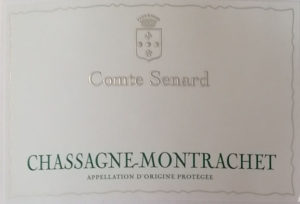
Chassagne-Montrachet Blanc
Grape Variety: Chardonnay
Vinification: Fermentation takes place in oak barrel using natural yeasts.
Aging: 16 months in 350 L oak barrels (50% new oak)
Tasting Notes: A beautiful nose which opens on exotic fruit notes, lemon, and toasted flavors. On the palate, it’s very fresh and delivers aromas of white fruits. Well balanced with a long aftertaste and a hint of lemon on the finish.
Food Pairings: Seafood, white fish, and chicken dishes.
Cellaring: 7 years from vintage.

Corton Blanc Grand Cru
Overview: 100% Chardonnay, this unique and rare wine combines the Clos Des Meix’s subtlety with the vigor of nearby Corton Charlemagne. This vineyard is farmed biodynamically.
Production Area: 0.46 hectares
Grape Variety: 100% Chardonnay
Average Age of the Vines: 25 years old
Average Yield: 1,800 bottles
Viticulture: The Grand Cru vineyard of Corton Blanc is farmed biodynamically but is not certified.
Harvest: Following a thorough checking of the vine’s maturity, harvesting is carried out by hand. A first sorting is done manually by the harvesting team, followed by a second sorting when the grapes arrive at the winery with the help of a sorting table.
Vinification: Gentle and rapid pressing. Fermentation takes place in oak barrels. SO2 added during bottling.
Aging: 18 months in oak barrels (40% new wood)
Tasting Notes: A silky and complex wine. It delivers aromas of exotic fruit, honey, and gingerbread. An unusual Chardonnay with a long finish.
Food Pairings: Ideal with strong cheeses.
Cellaring: 3-15 years
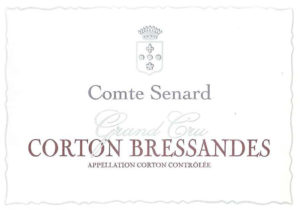
Corton Bressandes Grand Cru
Production Area: 0.64 hectares
Grape Variety: Pinot Noir
Average Age of the Vines: 25 years
Yield: 20,00 bottles
Vinification: 50% whole grapes. Natural yeast. Sorted at the winery. Cold pre fermented soaking for 1-3 days. Vinification for 2-3 weeks.
Aging: 18 months in oak barrels (60% new oak)
Cellaring: 5-20 years
Tasting Notes: Roundness and elegance are the prior characteristics of Corton Bressandes, the queen of the Corton Grands Crus. It is sweet, round, and complex.
Food Pairing: Red meats, poultry, and creamy cheeses such as Brie.

Corton Charlemagne Grand Cru
Overview: The most renowned of all the white Corton Grand Crus: elegance, finesse, richness, power and sensuality. These wines are full-bodied and rich and require aging to totally reveal all their complexity and delicateness.
Grape Variety: 100% Chardonnay
Average Yield: 600 bottles
Harvest: Following a thorough checking of the vine’s maturity, harvesting is carried out by hand. A first sorting is done manually by the harvesting team, followed by a second sorting when the grapes arrive at the winery with the help of a sorting table.
Vinification: Gentle and rapid pressing. Fermentation takes place in oak barrels. SO2 added during bottling.
Aging: 18 months in 350-liter oak barrels (50% new wood)
Tasting Notes: Elegance, finesse, richness, power. A truly great wine, well worthy of its appellation.
Food Pairings: Salmon, scallops, foie gras, sweetbreads.
Cellaring: 5-15 years
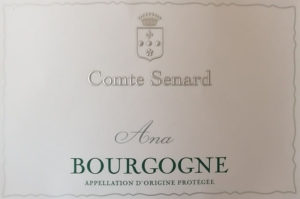
Bourgogne Blanc Ana
Overview: Named after the winemaker Lorraine’s daughter, Ana. This wine is like her: fresh and harmonious!
Production Area: 0.38 hectares
Annual Production: 3,000 bottles
Grape Variety: 100% Chardonnay
Average Age of the Vines: 10 years old
Vinification: Fermentation in oak barrels. SO2 added during bottling.
Aging: 12 months in 350 liter oak barrels (60% new oak).
Tasting Notes: Fresh and fruity wine enhanced by aromas of honey and white flowers. Elegant and well balanced on the finish. Very expressive while still young.
Food Pairings: Veal, fish, and shellfish.
Cellaring: 1 to 4 years

Bourgogne Rouge Auguste
Production Area: 0.88 hectares
Grape Variety: 100% Pinot Noir
Average Age of the Vines: 20 years old
Average Yield: 2,600 bottles
Harvest: Following a thorough checking of the vine’s maturity, harvesting is carried out by hand. A first sorting is done manually by the harvesting team, followed by a second sorting when the grapes arrive at the winery with the help of a sorting table.
Vinification: Cold pre-fermented soaking for 1-3 days. Vinification for 2-3 weeks. Natural yeast.
Aging: 14 months in oak barrels (50% new wood).
Tasting Notes: Named after the winemaker’s son, Auguste, this Bourgogne Rouge is expressive and complex on the nose, with red fruit aromas. A wonderful wine for everyday – fresh and fruity.
Food Pairings: Charcuterie and creamy cheeses.
Cellaring: 1-5 years

Aloxe-Corton Jules
Overview: This wine is blended from 5 different plots: Les Caillettes, Les Morais, Les Bruyères, Les Boutières, and les Nujots which are located on the lower slopes of the Corton hill. The Aloxe-Corton is the quintessence of all the Pinot Noir qualities and aromas and is considered among the best of the village appellations in the Côte de Beaune.
Production Area: 2.45 hectares
Grape Variety: 100% Pinot Noir
Average Age of the Vines: 30 years old
Average Yield: 3,500 bottles
Harvest: Following a thorough checking of the vine’s maturity, harvesting is carried out by hand. A first sorting is done manually by the harvesting team, followed by a second sorting when the grapes arrive at the winery with the help of a sorting table.
Vinification: 50% whole grapes. Cold, pre-fermented soaking for 1-3 days. Vinification for 2-3 weeks. Natural yeast.
Aging: 14 months in oak barrels (40% new wood).
Tasting Notes: Red berry aromas; ample and well-balanced.
Food Pairings: Poultry, aged cheeses
Cellaring: 3-7 years

Aloxe-Corton 1er Cru Les Valozières
Overview: The best location of all the Premier Crus, on the hillside of Corton, just below Les Bressandes. It has therefore inherited the same elegance and fruity aromas.
Production Area: 0.70 hectares
Grape Variety: 100% Pinot Noir
Average Age of the Vines: 25 years old
Average Yield: 2,400 bottles
Harvest: Following a thorough checking of the vine’s maturity, harvesting is carried out by hand. A first sorting is done manually by the harvesting team, followed by a second sorting when the grapes arrive at the winery with the help of a sorting table.
Vinification: 100% whole grapes. Cold, pre-fermented soaking for 1-3 days. Vinification for 2-3 weeks. Natural yeast.
Aging: 18 months in oak barrels (70% new wood).
Tasting Notes: Deep ruby color and a complex nose, with aromas of black and red fruits, licorice, and spice. Outstanding tannic presence and a long finish.
Food Pairings: Wild game, spicy foods, triple cream cheeses, and Comté.
Cellaring: 3-10 years

Corton Clos Des Meix Grand Cru Monopole
Overview: The estate’s “monopole” (exclusive production) is exposed full south and bordering on the Charlemagne area. The most pleasant of all the Cortons when young. This vineyard is farmed biodynamically.
Production Area: 1.64 hectares
Grape Variety: 100% Pinot Noir
Average Age of the Vines: 20 years old
Average Yield: 1,900 bottles
Viticulture: The Grand Cru vineyard of Corton Clos Des Meix is farmed biodynamically but is not certified.
Harvest: Following a thorough checking of the vine’s maturity, harvesting is carried out by hand. A first sorting is done manually by the harvesting team, followed by a second sorting when the grapes arrive at the winery with the help of a sorting table.
Vinification: 50% whole grapes. Cold, pre-fermented soaking for 1-3 days. Vinification for 2-3 weeks. Natural yeast.
Aging: 18 months in oak barrels (50% new wood).
Tasting Notes: Deep ruby color. A delicate wine, well-balanced with an impressive finish.
Food Pairings: Wild game, all kinds of cheeses.
Cellaring: 5-20 years
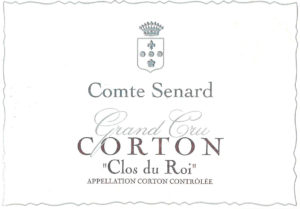
Corton Clos du Roi Grand Cru
Overview: The best known and most celebrated of all the Corton Grand Crus. A genuinely aristocratic wine. Powerful yet abundant in finesse.
Production Area: 0.64 hectares
Grape Variety: 100% Pinot Noir
Average Age of the Vines: 20 years old
Average Yield: 2,500 bottles
Harvest: Following a thorough checking of the vine’s maturity, harvesting is carried out by hand. A first sorting is done manually by the harvesting team, followed by a second sorting when the grapes arrive at the winery with the help of a sorting table.
Vinification: 40% whole grapes. Cold, pre-fermented soaking for 1-3 days. Vinification for 2-3 weeks. Natural yeast.
Aging: 18 months in oak barrels (40% new wood).
Tasting Notes: Bright ruby red color. Mature, supple, and velvety wine with red fruit aromas. Good cellaring potential.
Food Pairings: Wild game, grilled meats, poultry, light and creamy cheeses.
Cellaring: 5-20 years



